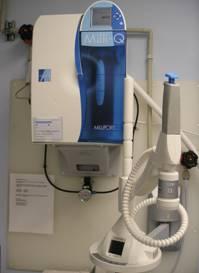Moravek offers custom manufacturing of tritium (hydrogen-3) labeled compounds for non-clinical research efforts. Depending on the production method, we can generally label, nominally label, or exactly label your compound with tritium. Moravek also has an extensive catalog containing many non-GLP 3H-labeled compounds to suit many research needs.

Experience
Our talented radiochemists are skilled in a wide variety of laboratory techniques and chemical reactions and are able to produce nearly any compound, including U.S. Drug Enforcement Administration Schedule I – V controlled substances. Moravek has decades of experience using many different methods to label compounds with tritium. Depending on your budget and desired molar activity, we can recommend a tritium labeling method to achieve your goals.
Custom Manufacturing Process
Production of tritium-labeled compounds typically includes production via one of the above tritium labeling techniques and purification, as well as any final steps to convert the product to the desired final form, including but not limited to:
- Salt formation or removal
- Dilution with non-labeled material
- Dissolution
- Lyophilization
Upon completion of the production process, analysis of the final product is performed according to the agreed-upon reportable testing and then a Certificate of Analysis is provided.
The logistics of your project will be managed by our talented customer service staff. A project manager will be assigned to your project and will provide periodic email updates, answer your questions, and keep your project on track.
